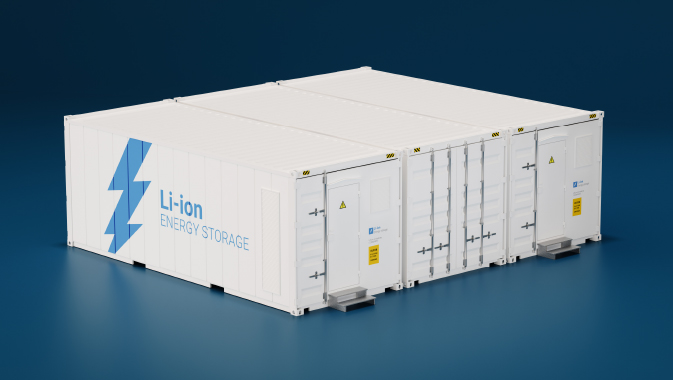From our homes to our offices, daily energy use is increasing across the board – both for mundane tasks as simple as charging our cell phones to key operations like global corporations backing up massive amounts of sensitive data offsite. The need for safe and readily available power keeps growing, and some predict energy storage will be the next big business.
Decades ago, reliable electricity was a luxury. It was slow to catch on, and people continued to heat and light their homes with fireplaces, coal, gas, or candles for decades after the introduction of electrical power. However, homeowner and business demands kept rising as new appliances such as dishwashers and electric-powered refrigerators were introduced. Eventually, it became something to take for granted until disaster strikes.
Human beings learn our lessons through adversity, and few predicaments are as challenging as natural disasters. Just the past few years have seen massive losses of life and billions of dollars in damage caused by hurricanes Florence, Harvey, Irma, Maria, and Matthew, to name just a few.
One of the costliest and deadliest was October 2012’s Hurricane Sandy which slammed the Caribbean and the East Coast of the U.S., killing 285 people and causing an estimated $62 billion in damage in America alone, with another $315 of damage in the Caribbean. Hurricane Sandy also left hundreds of thousands without power for days in New York and Canada, causing nuclear reactors to shut down and companies to close, resulting in at least $30 billion in lost business.
Following Hurricane Sandy, demand for standby generators soared, as homeowners purchased smaller units run on gasoline or large units powered by natural gas.
The generator market represents a multi-billion-dollar annual industry and serves as a reminder that our once-trusted electrical grids are aging and not as resilient to natural disasters as we believed. Just as homeowners purchase external generators in the wake of hurricanes, typhoons, earthquakes, floods, and other natural disasters, businesses are acutely aware of the need for dependable sources of electricity.
This leads to questions about the best sources of power. Should our grids be powered by nuclear power or wind or natural gas? Should we continue to invest in oil and gas or transition to greener sources like solar? Likewise, is one grid the answer? September 2017’s Hurricane Maria’s 170 mile-per-hour winds not only devastated Puerto Rico but its already fragile transmission system, leading to heated discussions about the need for microgrids, subsystems that can be disconnected from the public system and operated on their own temporarily.
When electrical grids have a catastrophic failure, they need to be rebuilt. Power must be restored gradually – or in the case of Puerto Rico, painfully slowly as rebuilding continues – yet businesses need to remain open.
From fridges and freezers in local convenience stores to heating and cooling multi-storey office buildings and manufacturing facilities, power is vital. Realizing this, more businesses are investing in energy storage.
According to research from the U.S.-based global management firm McKinsey & Company, energy storage will continue as prices continue to drop, with estimates that technological advances will see worldwide energy storage approach about 1,000 gigawatts in the next twenty years. A single gigawatt provides energy for approximately 700,000 homes for a year.
“Many people see affordable storage as the missing link between intermittent renewable power, such as solar and wind, and 24/7 reliability,” said McKinsey & Company in The New Economics of Energy Storage, which called energy storage a preferred technology. “Major industrial companies consider storage a technology that could transform cars, turbines, and consumer electronics.”
As prices of energy storage continue to decline and better products such as longer-lasting lithium batteries become more prevalent, it is good news for businesses of all types that require reliable sources of power. Efficient energy storage devices will benefit many industries, particularly grocery chains which – according to the United State Environmental Protection Agency – already spend forty to sixty percent of their total energy bills on keeping fridges and freezers operating.
Even though renewable energy such as solar cells and wind turbines are showing promise, businesses cannot depend on these sources entirely, since they are subject to the whims of nature. Lithium-ion batteries, however, are growing in use, led by the development of electric cars.
Although well-intentioned, the push across Australia to achieve seventy-three percent of its power from renewables by 2021 has led to blackouts, including one in 2016. In South Australia, the Hornsdale Power Reserve was completed in late 2017 by Tesla. The massive 100-megawatt project is the world’s largest lithium-ion storage system and will fill-in electrical gaps to regulate power.
In the United States, the energy storage sector is growing rapidly. Last year, the most recent quarterly report U.S. Energy Storage Monitor from research and consultancy company Wood Mackenzie stated that battery installations totalled 311 megawatts and 777 megawatt-hours with especially significant growth in the last quarter.
Although the industry broke records in 2019, insiders expect it to double this year and triple in 2020. This trend will undoubtedly continue, as energy storage becomes more powerful and less expensive. While sources such as lithium-ion are growing in popularity, they do have some downsides, including a maximum lifecycle of about seven years.
Other technologies, such as the vanadium redox flow battery (VRFB), which was first explored back in the 1930s, are being revisited by CellCube Energy Storage Systems Inc. of Perth, Australia. CellCube’s VRFB systems can provide energy for over two years with no issues, boasting advantages over their lithium counterparts, as they have a lower fire risk, deeper cycle, and the ability to charge and discharge at the same time.
Recent natural disasters have revealed the frailty of older, centralized electrical grids. And as the push to reduce our dependency on fossil fuels continues and the move towards greener sources increases, the need for stable energy to power business worldwide will continue.













